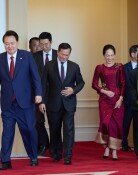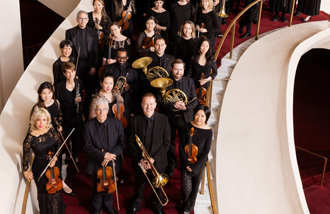Roh Adds 22 Ministers in Three Years
Roh Adds 22 Ministers in Three Years
Posted February. 18, 2006 02:59,
In the three years since President Roh Moo-hyun took office, Cheong Wa Dae has reshuffled itself over 10 times, or about once every three to four months, according to a Dong-A Ilbo survey.
Over that time, five ministerial and 22 vice ministerial posts have added to the cabinet.
Dong-A Ilbo reviewed the various reorganizations of Cheong Wa Dae and the cabinet on the third anniversary of Rohs inauguration yesterday and found that the number of presidential office personnel has increased from two chiefs of staff, five senior secretaries, and six advisers three years ago to the current three chiefs of staff, eight senior secretaries, and two advisers now. Overall, two ministers and three vice ministers have been added.
Critics say Cheong Wa Dae frequently reshuffles its cabinet to increase its size and plug loopholes.
The government recently scrapped its dedicated senior secretary system which was aimed at increasing the independence of individual departments. But two senior secretary posts were recently added, thanks to newly added secretarial offices for the department of policymaking and social policy under the direction of the Office for National Policy in May 2004. This stirred controversy over reminders of a time when Cheong Wa Dae had firm control of every department.
Meanwhile, the senior secretary office of public participation, which was created to assist the participatory government, was changed into the Senior Secretary Office for Participation and Innovation just 10 months later, and abolished in May 2004, just 15 months later. In addition, a secretarial leadership post was created under the direction of the presidential speech team in May 2004, but it was abolished after just seven months when then secretary Lee Joo-heum left the post for an appointment as Koreas ambassador to Myanmar. Some say that the secretary post was created just for Lee.
In the meantime, the number of public servants has increased 25 percent from 106 in 2002, the end of the Kim Dae-jung administration, to the current 133.
A ministerial post costs the government about 400 million won a year, including a salary of about 100 million won, and money for up to six aides and various expenses.
Song Hee-jun, a public administration professor at Ewha Womens University, said, Communist countries had many ministers and vice ministers in the past, but the number in industrialized countries, such as Japan, is declining. Even New Zealand, which reformed its public administration system in the early 1980s and increased government agencies for responsible management, kept its number of officials low by encouraging them to hold additional positions.
Yeon-Wook Jung Min-Hyuk Park jyw11@donga.com mhpark@donga.com






